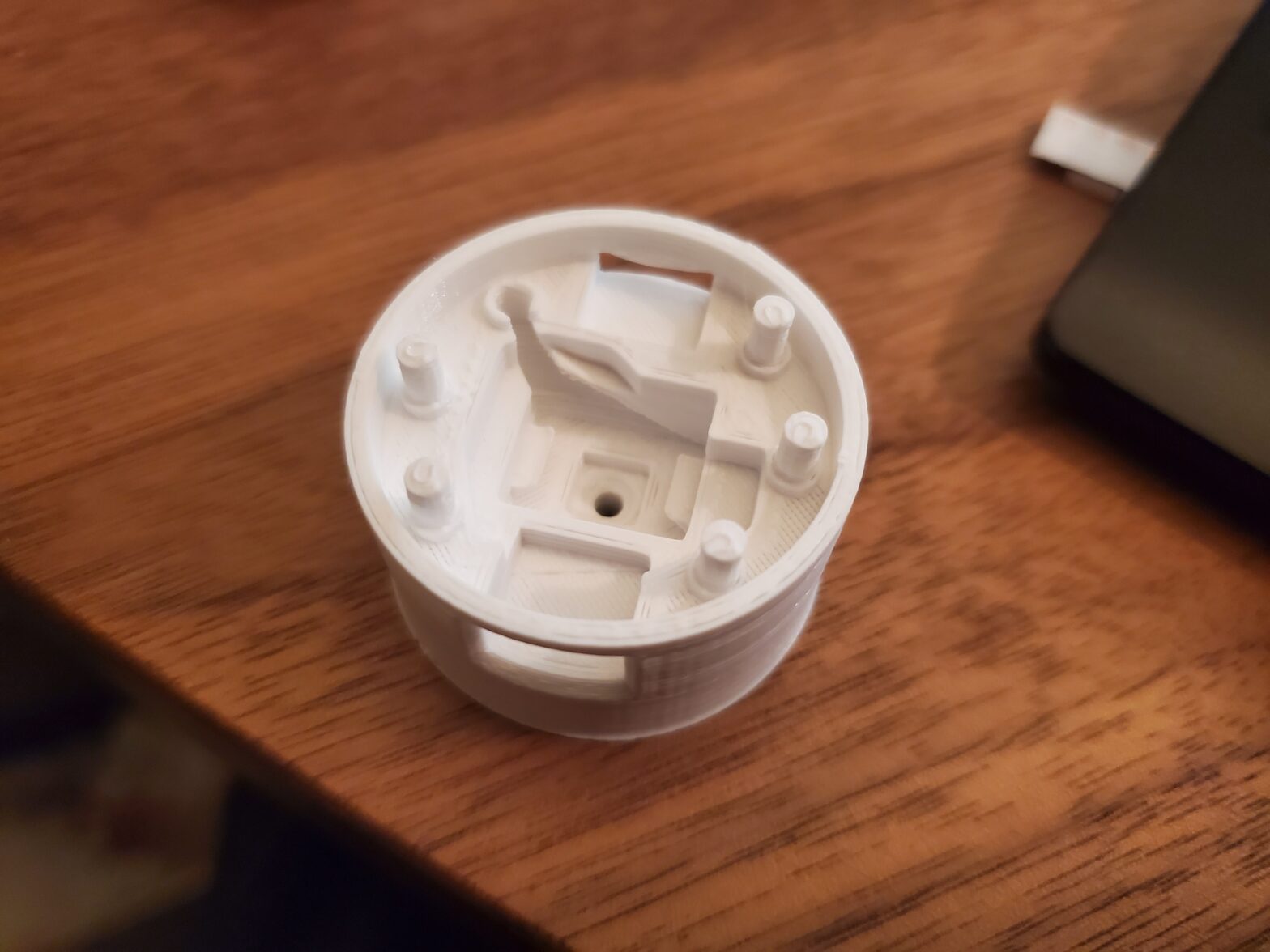When I first began quarantine I was extremely productive. I rewrote some big parts of CruiseSheet and got a lot of work done. Then after a week or so I had cleaned out my backlog of tasks and, with cruise sales down about 100%, wasn’t coming up with any pressing tasks to add to my list. I needed a new project.
For over a year, way on the backburner, I’ve had a project of building the world’s most realistic LED candle. Over the past few years I’ve bought just about every possible contender on Amazon and found them to be pretty bad. Some have good color tone but flicker to much, others flicker appropriately but are orange, some have little movable wicks but cast weird shadows. I have one I programmed and built myself, but it’s just a circuit board with wires dangling off of it. Maybe, in quarantine, it was time to build the exterior shell of it.
I’ve been interested in 3D printing for a while but was worried that if I bought a printer I would use it for a few days to print some of the standard stuff others had already made, and then it would just sit on my desk forever. The only friend who had one did exactly that and had only recently thrown the thing away. But I figured with at least one concrete project to do and a luxurious amount of free time, it was a good time for me to give it a try.
At the same time I saw a deal for a Monoprice Ultimate Maker (which is a rebranded Wanhao Duplicator 6), so I bought it. At the time I figured that any 3D printer would be good enough to make such a basic little project, so I didn’t do much research.
I unboxed the printer and printed a little test print of a batman logo that was already loaded on the printer. I was fascinated by the process and surprised at the high quality of the plastic. For some reason I had a preconception that it was crappy plastic.
Test print out of the way, I had to learn how to actually build something. I had never used CAD before, so I did a little bit of research. It seemed like the best option for Linux users is FreeCAD, so I downloaded that and watched some tutorial videos.
I think my jaw was dropped for most of the tutorial watching. I had never concieved of the idea of parametric modeling, that you could specify the dimensions and relations of various parts of the model and have them remain constant while the rest changed. For example, I could specify that the hole that the wick would come out of would always be 2.5mm wide, and that the outer shell and inner shell would always be 1mm apart from each other. It was a totally new way to look at creating something.
Over the next few days I must have printed 50-100 candle shells, each time making small tweaks and modifications. I experimented with fiber optic channels to carry light, different charging options, creating wax molds to coat the candle in wax, and any number of other ideas. It’s very empowering to be able to have an idea, make a few changes, and then hold those changes in the physical world.
Once I’d gone through this process it took hold in my brain and everything seemed like an opportunity to design something new. When I fill up my Teforia tea machine in the morning some of the tea falls on the counter sometimes, so I made a simple funnel to more easily fill it.
When I first got my Snow Peak Kanpai water thermos I had bought every possible plastic case from Amazon to find the one which would best fill the space. I found a good one, but it wasn’t perfect. So I spent a few days learning how to design screw threads and made some that fill the space exactly. Now I can carry almost twice as much tea with me, which will really impact my life once I’m able to travel again.
One day I wished I had another incense holder, so I printed out a design that someone else had made. It was a standard design with a hole that you put the stick in. At the end I was annoyed that I had to pull the little unburnt stub out of the hole and thought that there must be a better way to make an incense burner which would automatically discard the stub. A couple hours later I was holding one in my hand that I had invented, and about a day later it actually worked well.
Having a 3D printer, and the skills to be able to design 3D items now feels like a totally essential part of life. I routinely print out little things that I would have otherwise had to buy or go without. As a natural born maximizer, I’m able to make things exactly how I want them, which I find incredibly satisfying. If you’re the tinkering type, you might want to buy one too. If you aren’t going to design stuff yourself, it’s probably not worth it.
I’m very happy with the printer I got, especially because I have upgraded most of it (firmware, dampers for motors, hot end, extruder, Z-coupling, nozzle, etc). To save you some research, it seems like Prusa printers are the gold standard, but Creality Ender printers are the best bang for your buck.
###
Photo is one of my latest candle designs, though I have some big changes planned. I just thought it was a good example of the sort of complexity that is pretty easy to do in 3D printing.

Leave a Reply